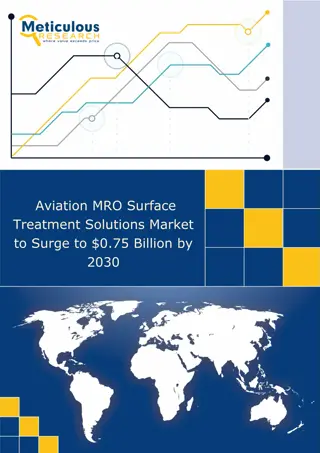
Advanced Problem Solving Techniques in UKIEPC 2024
Explore the innovative problem-solving approaches showcased in the UKIEPC 2024 competition. From creating words with specific letter requirements to optimizing parameters efficiently for linear regression, dive into the detailed solutions and techniques provided for each challenge. Discover strategies such as using hashmaps, sorting methods, calculus, and dynamic programming to tackle complex problems with precision.
Download Presentation

Please find below an Image/Link to download the presentation.
The content on the website is provided AS IS for your information and personal use only. It may not be sold, licensed, or shared on other websites without obtaining consent from the author. If you encounter any issues during the download, it is possible that the publisher has removed the file from their server.
You are allowed to download the files provided on this website for personal or commercial use, subject to the condition that they are used lawfully. All files are the property of their respective owners.
The content on the website is provided AS IS for your information and personal use only. It may not be sold, licensed, or shared on other websites without obtaining consent from the author.
E N D
Presentation Transcript
UKIEPC 2024 Summary and solution outlines
Overview Create a word containing: All of the letters of word1 All of the letters of word2 If a letter occurs: N times in word1 M times in word2 Then it should occur at least max(N,M) times in word3 Amalgram ?? correct solved at: ??:?? by ?? ??
Amalgram Techniques Algorithm Hashmaps Sorting We need a way to take the superset of both strings One method inspired by merge-sort: Sort both of the strings Create two pointers i,j. For as long as i<n, j<m: If a[i] == b[j]: Print a[i] and advance both i++, j++ Otherwise if a[i] < b[j]: Print a[i] and advance i++ Otherwise: print b[j] and advance j++ Other methods exist Like counting frequency in a hashmap for each string
Overview You are given a formula for linear regression and must optimise the parameters to the formula The optimisation takes place on many different subarrays of the same list Invent a way to do this efficiently (faster than O(N) in the size of the list) Budget Analysis 0 correct solved at: ??:?? by ?? ??
Budget Analysis Techniques Algorithm Calculus Prefix sums Taking the partial derivatives and solve the resulting linear equations system. One could see that for the linear regression of y on x (even if it is regularized) one needs to know the following: sum(x_i), sum(y_i), sum(x_i^2) and sum(x_i * y_i). Given that the given x_i and y_i are constant, we could precompute the prefix sums and get the regression coefficients for each query in O(1). Computing the prediction also takes constant time. Overall time complexity of the solution is O(n+m)
Overview Draw the shortest line going through some line segments A, B, C, D, Z Going through a line segment multiple times is OK, but you must go through the segment in the right order too. Cross Country 0 correct solved at: ??:?? by ?? ??
Cross Country Techniques Algorithm Geometry Dynamic programming When we encounter a line segment on our path, there are three potentially-optimal moves: Keep going in the same direction Keep going in a reflection of the same direction Completely change direction The shortest path will only completely change direction if it touches the endpoint of a line Otherwise the path could be shortened by changing angles Eliminate the reflection aspect by generating 2^N scenarios of virtual line segments where reflection is already simulated. Then it s a shortest path problem: Two segment endpoints have a connecting edge iff the line between them goes through all intermediate segments.
Overview Given is a system of 3 equations in 4 variables n , e , s , w This system is underspecified, but relates all of the variables to each other. The objective is to make the maximum of |n|, |e|, |s|, |w| as small as possible under the constraints. Drone Operator 0 correct solved at: ??:?? by ?? ??
Drone Operator Techniques Algorithm Greedy algorithms Sorting Our equations have one spare degree of freedom: p = e - w ::: w = e - p r = n - s ::: s = n - r y = n + e + s + w ::: y = 2n + 2e - r - p In a solution where max(|n|,|e|,|s|,|w|)=T, two variables have |v|=T. Otherwise, max(|v|) could be decreased without increasing T. The options are: (|n|=|e|, |n|=|s|, |n|=|w|, |e|=|s|, |e|=|w|) So either 1. Add each possibl equation into the system and solve algebraically, taking the minimum solution as the answer. Or 2. Binary search on the value of T, and for every pair in (n,e,s,w) set both elements to T then check if this gives a valid set of equations.
Overview Remove some items from an unsorted list, to make it sorted Eradication Sort For each gap of width W you leave in the resulting list, you pay a cost of W What is the minimum total cost you can achieve? 0 correct solved at: ??:?? by ?? ??
Eradication Sort Techniques Algorithm Dynamic programming Binary indexed trees Convex line functions Straightforward dynamic programming gives a (too slow) solution: cost[x] = the cost in case the last item kept so far is y[x] cost[x] = min(cost[i] + (x-i) for-all [i < x] st. y[i] y[x]) Complexity of implementation is O(N ) We need ways to find the candidate values, and to get the minimum among them, quickly. cost[x] = cost[i]+(x-i) can be rearranged as a line equation: cost[x]-x = cost[i]+i -(2i)x If we ignore (y[i] y[x]), we can store the lines in a list sorted by gradient, and use binary/two-pointers search to find the best line for a given x. To address the (y[i] y[x]) constraint, we ll create a binary-indexed tree of these lists. After calculating cost[x], update lines[y[x]...inf].
Overview The coordinates of some points with high dimensionality are given We will build a subset of these points and call it K. K is built by repeatedly taking the point which is farthest from the closest point in K Find a way to build the set K quickly. Finding Proteins 0 correct solved at: ??:?? by ?? ??
Finding Suspicious Proteins Techniques Algorithm Ad-hoc optimisation Precalculation When choosing the next value V (which happens K times): We need to calculate min( dist(V, k[i]) forall existing k This is (O(L*K)) ) -too slow However, min(dist(V, k[0 i])) is the same as: min(dist(V, k[0 i]), dist(V, k[i+1])) The only thing that changes is the addition of the new element of K, and this can be updated later. We can maintain the current minimum distances to so-far- unselected items as dist[0 n-1] Every time we choose a new element of K, update all the distances with min(cur, dist(k))
Overview You are given a 2D word and a 2D grid in which to search for that word Highlight the places where the word occurs in the grid. Grid Search 0 correct solved at: ??:?? by ?? ??
Grid Search Techniques Algorithm Hashing FFT String-matching algorithms based on hashing (Rabin-Karp) and FFT translate well over to multiple dimensions For example, using a polynomial hash we can use 2 passes: For each row, save the running hash of the last N items Then for each column, make a running hash of the last M hashes (using P^N or some other prime for rows) Knowing the size of the word in advance helps with this, eg. building prefix sum tables for each row. Standard string-matching with Aho-Corasick is adaptable enough to work too. First, for each row find which string(s) match at each column Then, look in each column for the right pattern of match IDs Both steps are one-dimensional string matching problems.
Overview You have two shapes, A and B. The shapes may be convex. However, the shapes are simple polygons with integer-aligned vertices. Shape A needs to fit inside B. How big can you scale A (around the origin) so that it fits inside B? Hedge Topiary 0 correct solved at: ??:?? by ?? ??
Hedge Topiary Techniques Algorithm Ray-ray intersection Sweepline Rational arithmetic Imagine slowly scaling shape A up. At times, the boundaries of A cross inside/outside the boundaries of B (and vice versa) Such intersections happen at vertex/edge boundaries (a vertex of A/B touches an edge of B/A). We re going to solve the problem individually for a radial slice in the direction of each vertex of A+B and combine solutions later. For each vertex in the input, find the one-dimensional slices of A and slices of B in the direction of that vertex. We need to align these slices so that they overlap. For each slice attached to a vertex, find the set of feasible ranges of scale factors where it can fit into/around the slices of the other shape Finally, use a sweepline to intersect the sets of feasible regions.
Overview We want to demonstrate Simpson s Paradox. Two teams have been training equally hard across N categories of problem Team1 solved a[i]/b[i] of category i Team2 solved c[i]/d[i] of category i Both teams attempted M problems in total. Generate a table of results where team1 has done better than team2 on each individual category, but team2 has solved more tasks overall. Inconsistent 0 correct not solved
Inconsistent Patterns Techniques Algorithm Construction Given the M >= 4N one construction that works is as follows: -(M-3*(N-1)-1) / (M-3*(N-1)) < 1/1 -1/3 < 1/2: repeated (N-2) times -1/3 < x / (M-1-2*(N-2)) where x is the smallest integer such that this inequality holds, ie floor(M-1-2*(N-2)) The intuition behind this construction is looking at (a_i, b_i) and (c_i, d_i) as two-dimensional vectors. We need pairs of vectors such that: the slope of vector1 is greater than the slope of vector2 while this order reverses when we add up all first elements is pairs and all second (sum(a_i) / sum(b_i) correspond to the vector sum of (a_i, b_i)).
Overview You start with a connected, unrooted binary tree of computers (nodes) and connections (edges) Distances between nodes are defined using demands Periodically an edge will be removed from the tree, and you need to re- connect the graph in the cheapest way possible according to demands x distance. Jabber Network 0 correct solved at: 02:53 by ?? ??
Jabber Network Techniques Algorithm DFS on trees Precomputation Once an old link is removed, the graph is split into two connected components, and you need to reconnect them again. You can search for the endpoints of a new edge independently in each of these 2 components
Jabber Network Techniques Algorithm DFS on trees Precomputation Our way of searching for an endpoint in a component: Identify all demands (s_i, t_i, d_i) that leave that component i. (s_i being a vertex in the current component) The contribution of the endpoint p is the sum of products of demand d_i times the distance between s_i to p This contribution can be recomputed efficiently when you move p to one of its neighbours to do that, precompute sums of demand products in each subtree using a DFS This makes it possible to find the best endpoint using another DFS Complexity: O(n(n + d)): n iterations, each iteration takes O(n + d)
Overview Complete the design of a scarf made out of patchwork stripes Within a range of K stripes, the same colour shouldn t occur more than once Otherwise, make sure that no colour appears too often (minimise the frequency of the most-frequent colour) Knitting 0 correct solved at: ??:?? by ?? ??
Knitting Techniques Algorithm Greedy algorithms Priority queues If a scarf can be constructed, we can build it with a greedy algorithm Go from left-to-right filling in spaces. Scan the last K-1 items of the existing scarf, looking for colours that we can t use for now. Put the remaining colours in a priority queue where the least-used colour is on top (it s always best to use this if available) Every time we add a colour from the priority queue, remove it from the queue and add scarf[i-k+1] to the queue instead. Make sure to check the resulting scarf is valid! (And that the priority queue never ran out of items)
Overview Given a pattern of up to 31 strings, represent those strings using emojis and repeat those emojis up to 31 times to make a nice calendar The emojis you pick should match the strings, eg. todayislegday should be represented by a Leg Day 0 correct solved at: ??:?? by ?? ??
Leg Day Techniques Algorithm Unicode Grit Make sure to print the week numbers at the start of each line! For each string, use your standard library s string-in-string functions to check which rule it matches first (in the order specified in the input) C++ and Python have no problem outputting UTF-8 characters in a non-UTF8 context. When printing in Java, make sure to set the encoding on Strings properly.
Final Standings http://ukiepc2024.cloudcontest.org/






















